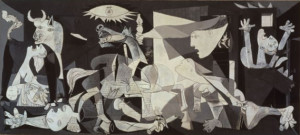I adore StoryCorps and was thrilled to see that it was included in this book, though I did have to really sit down and think about its relevancy in this particular regard. I spent my own weekend elbows-deep in diaries, letters, and really personal primary sources that would not exist if not for one person choosing to put their thoughts to paper and contribute to the historical narrative. Of course, for most of these people, contributing to history wasn’t their primary goal… but I couldn’t be more grateful for it today. I see StoryCorps and other user-generated historical content in the same way. One hundred, two hundred years from now, historians will, I think, feel the same way about programs like these that I feel about my sources right now. (That is, if our profession still exists…) But I think it’s here where we also have to heavily rely on trained historians, who can synthesize the material: the “facts” with the individual stories, and really look at the way that stories can be edited to tell a story, for better or (usually) for worse.
I too had a difficult time picking out the source of contention between art and history. I think if one is worried about losing relevancy, or keeping attendance numbers high, then art could be the very first place to look for new perspectives and to bring a new, more broad audience into the room. I mean, this is why we have art historians, right? Stories can be told in a multitude of ways, and all throughout history we have primary sources from artists who chose to make a statement about their own world, their own era, their own perspective…

I struggle a little more with contemporary artists’ work being used to seriously interpret the past, but I also know that I have more to learn about artists such as reenactors, and how they bring their knowledge into play. Good thing there’s a real pro in the room to help me understand 🙂